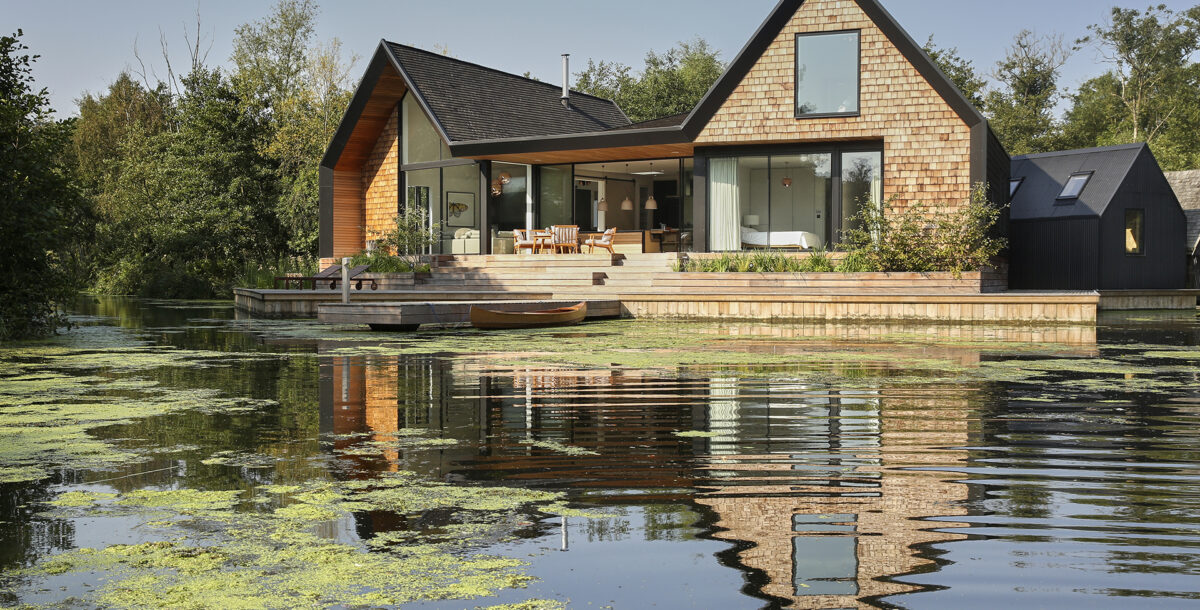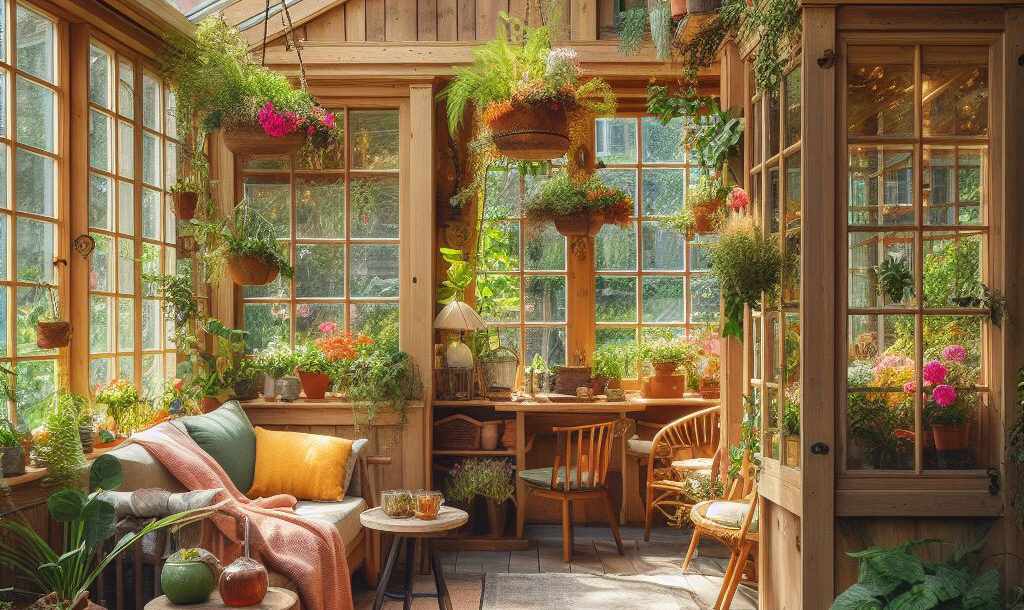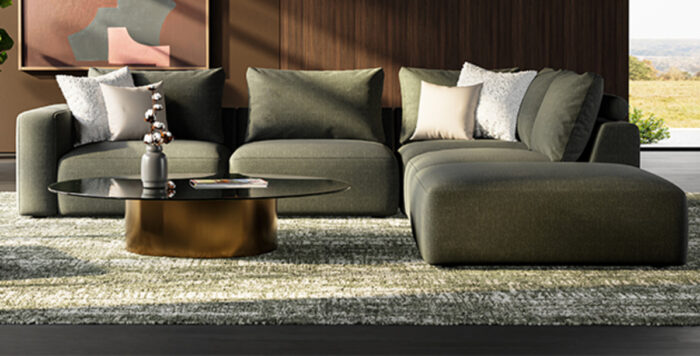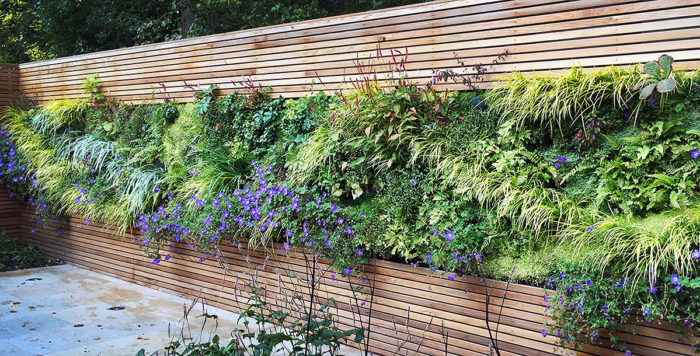How to create the perfect home gym
No matter what size space you have available, you can make it work as a work out space. We’ve got expert advice on how to create a home gym that’s perfect for your needs
If you’ve got the space, a home gym can be one of the best ways to achieve your fitness goals – enabling you to save time and money and, with all the equipment at home, you’ve got no excuse not to find the time to exercise.
Read on for great tips from fitness experts on how to create the perfect home gym…
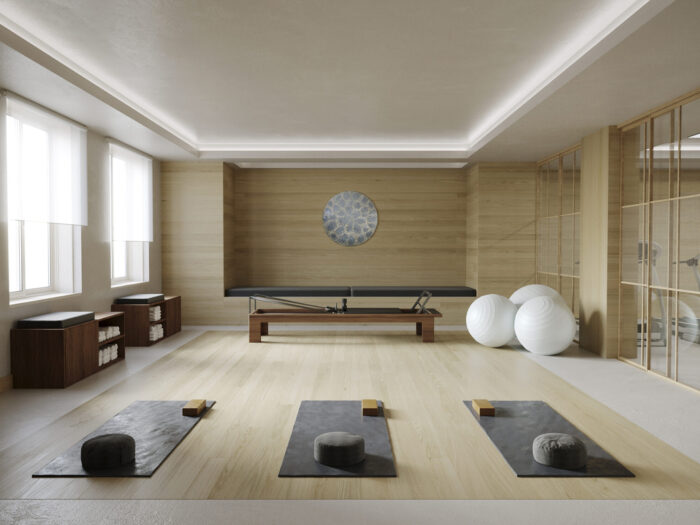
Image credit: HollandGreen
Adam Clark, from Rugbystuff.com, says, “Building a home gym doesn’t need to be expensive or time consuming.
You can create a useful space with versatile equipment that is easy to store.
It’s better to begin with a few pieces of kit and gradually build up as you go, as different tools can target different muscles and help you vary your workout.”
It doesn’t matter whether you’ve got a whole room to give over to working out, or just a corner of your bedroom or sitting room, just make sure the space is somewhere where you will feel happy and motivated exercising regularly.
As James Bickerstaff, from OriGym, points out, “Good ventilation and ample natural lighting can significantly improve your workout experience.”
Measure up
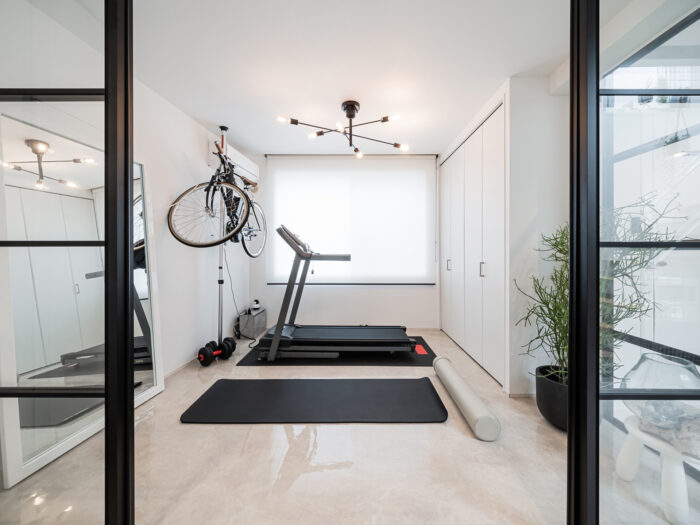
Image credit: CorkSol
Whether your space is large or small, the best first move is to measure it, so you can be sure any equipment you buy will fit.
It’s also a good idea to make a scale plan of your space, either digitally or just on a piece of squared paper, to show where you’re going to put your equipment.
Don’t try to cram in too much kit. Eloise Skinner, fitness instructor and author, says, “Avoid planning out the space in an abstract way, without thinking about how you’ll actually move around it.
Remember you need room for arm and leg movements, space to move around equipment, and space to warm up and cool down.
If you do other activities, like kettlebell workouts, HIIT or cardio, remember you’ll need extra space for extended movements.
“Your choice of equipment will depend on your typical gym usage and fitness goals, though – try to observe what you usually do at the gym (or ask your personal trainer for personalised recommendations) before investing.”
Choose your fitness goals first
As Eloise suggests, the kit you choose will be determined by your personal fitness goals.
There’s no need to buy fancy equipment you are never going to use.
Alasdair Nicoll, personal trainer at The Fitness Group, says, “Start by defining your fitness goals, and then how you are going to achieve these, whether it’s through strength training, cardio, flexibility, or a combination of these.”
Pick the right look for you
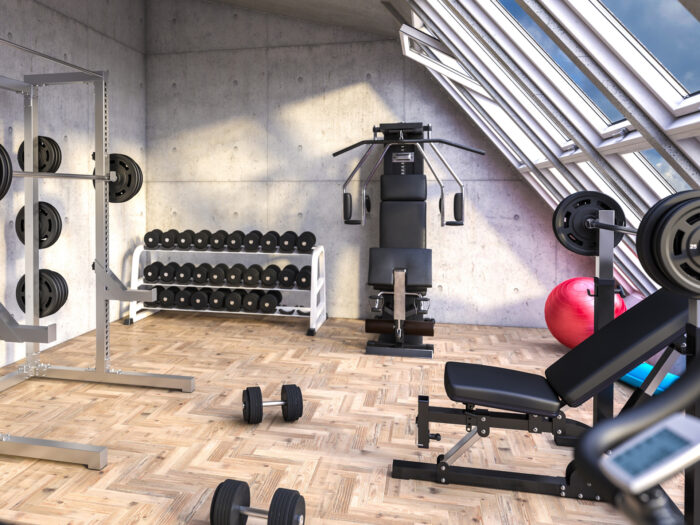
Image credit: CorkSol
You might be lucky enough to have space to turn over to creating a dedicated gym – a spare bedroom, say, or conservatory or garage.
If that’s the case, think about how you’re going to decorate the room and what flooring to choose.
You could go with the large mirrors that you find at the gym, as James points out, “They are useful for monitoring form and technique, and ensuring exercises are performed correctly to prevent injury.”
You could also avoid mirrors altogether, and go for a calming, yoga-studio zen-like vibe – the whole point is: this is your space so you can do whatever you like.
You know you best, so choose whatever you think will help keep you motivated – even if that isn’t a traditional gym ‘look’.
Get the flooring right
You do need to have suitable flooring. It’s important to have non-slip flooring that will absorb the impact of jumping and weights – purpose-made gym matting is ideal.
Adam says, “Proper gym flooring will provide shock absorption, which will reduce your risk of injury and protect the sub-flooring from damage.”
AV set up
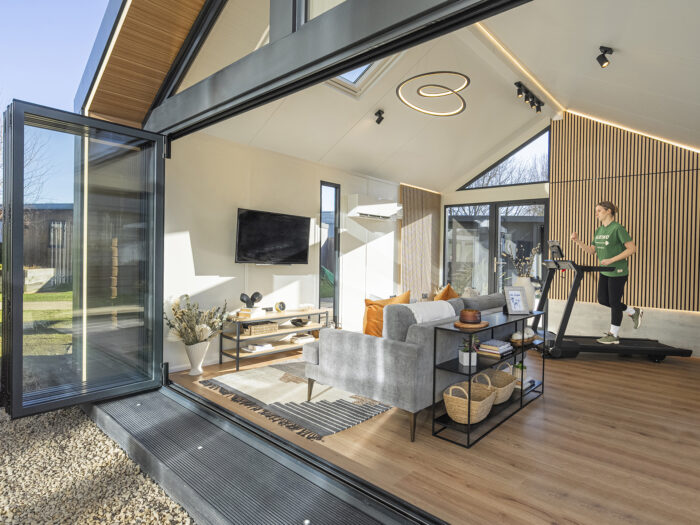
Image credit and main image at top of page: Green Retreats
Music can be your best motivator when working out – or watching TV can be a great way to pass the time while you sit on an exercise bike or cardio machine.
You might be happy using your Airpods connected to your phone but, if you want a more permanent set-up, you could go for a wall-mounted TV and soundbar or speakers – or a more discreet solution involving speakers set into the ceiling.
If you’re working out in your bedroom or lounge, all the AV gear you need will probably already be there but, if you’re building a high-end gym from scratch, think about your audio-visual requirements early on so they are an integral part of the design.
Eloise says, “If you stream online workouts or tutorials, you’ll need a screen at eye level, in a place visible from your workout location.”
Home gym: heating
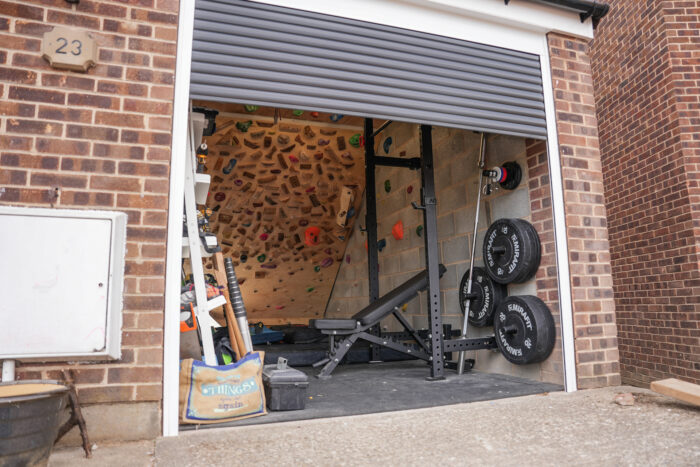
Image credit: Garolla garage doors
If you’re going to be using your garage as a gym, you might need to install heating for the winter.
Electric heaters are a good option as they heat up quickly, don’t need maintaining, and can be installed and used separately from your main heating system.
An infrared heater near your workout area might work well for this purpose, or a smart electric radiator that comes on when it detects someone in the room.
The right heater for you will depend on the size of your garage, and how often you use it. Talk to an expert supplier about your exact needs.
Insulation
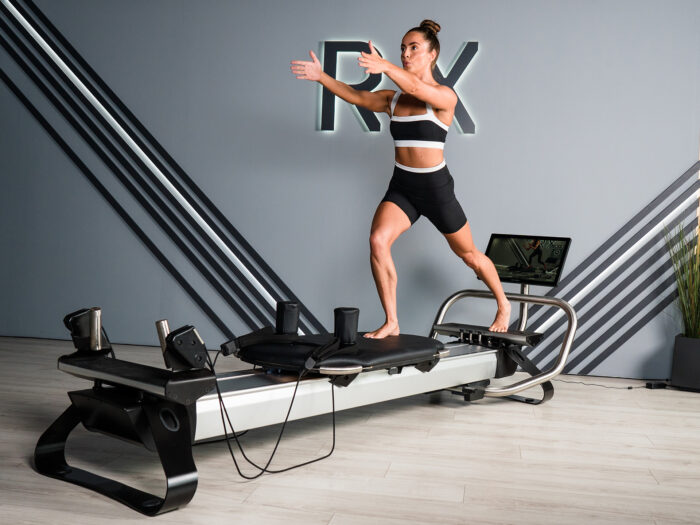
Image credit: Reform RX
If you are going to be heating your garage and using it regularly, it makes sense to consider adding insulation – there are various specialist options available from insulated garden doors to the latest spray-on cork insulation.
If you’re planning on doing a lot of high intensity workouts next to a shared wall, you might want to think about investing in some kind of acoustic soundproofing panels for the walls too – to avoid annoying your neighbours with the noise.
Home gym: lighting
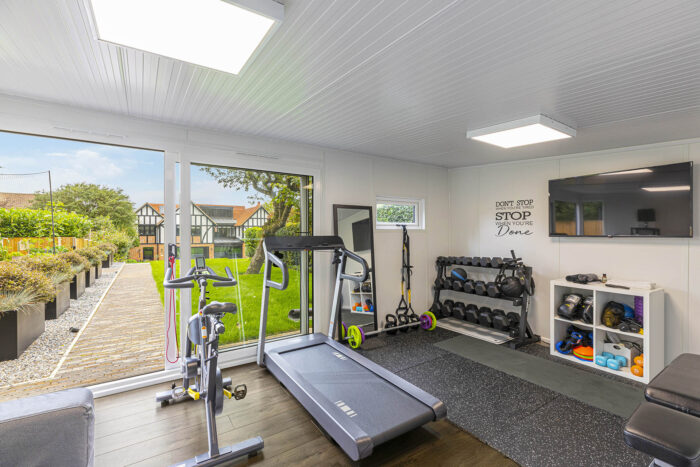
Image credit: Green Retreats
Your lighting choice will be determined by the type of exercise you’re going to do.
If your exercise space has lots of natural lighting, all the better – if not, think about adding extra recessed, spot or track lighting, for nice, bright motivating lighting.
On the other hand, if you’re planning on doing yoga, you might want to look at programmable mood lighting or dimmable lighting for a gentler, lower light level.
Air conditioning
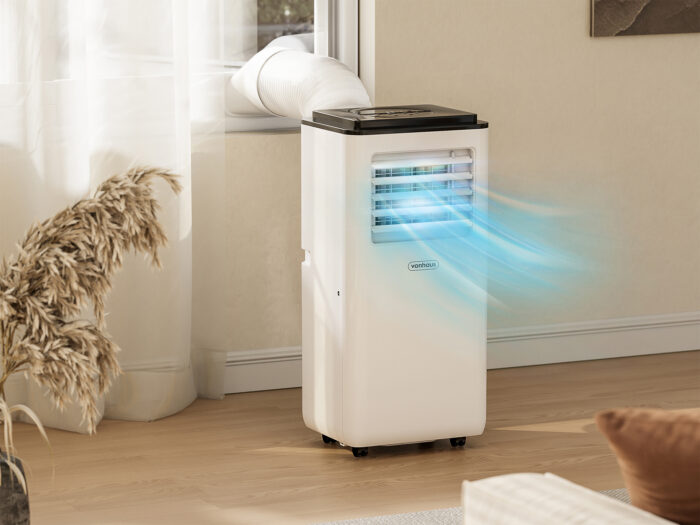
Image credit: Vonhaus
We all know how sweaty you can get when you’re working out, so a great addition to any space where you’ll be exercising regularly is air con.
A portable air-conditioning unit will cost upwards of £300, and you need a window through which to vent the warm air.
If you can afford it, opt for a unit that also works as a dehumidifier – this is a good way to stop your gym from getting damp, even in winter when you don’t necessarily want to cool the space.
If you’re going to be working out in an unheated space such as a garden room or garage, investing in a more expensive unit, that heats as well as cools, could be a good way to make the space useable all year round.
If you’ve got the budget, and you’re looking to create a permanent gym, look at split air-con units fixed into the wall – they save on floor space and are visually much less intrusive.
Start simply
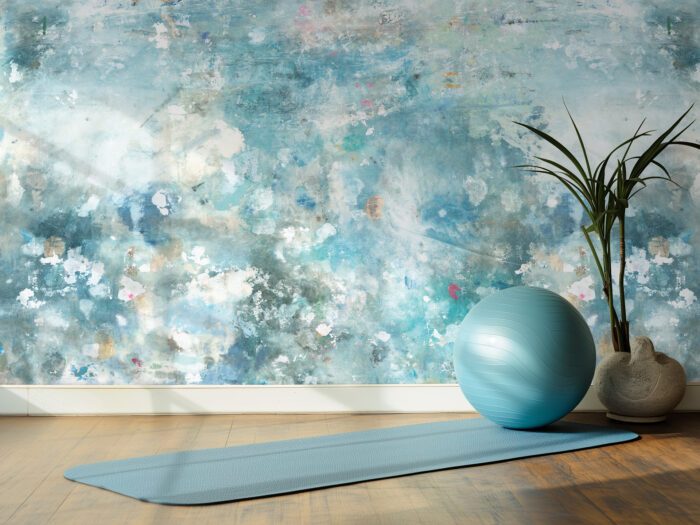
Image credit: Feathr
One you’ve got the room right, it’s time to get your equipment.
Luke Hughes, from Active Careers, reminds us that you don’t need to invest a lot in expensive equipment to get great results.
You can begin with some basic gear. He says, “Focus on equipment that is portable, cost effective, multifunctional, and easy to store – also choose kit that won’t damage the interior of your house.
“Basic equipment like resistance bands, medicine balls, plyo boxes, sandbags, skipping ropes, stability balls, parallettes and ab wheels all meet these criteria, and are great starting points for a home gym.”
Adam agrees. He says, “Medicine balls are often used in physiotherapy for training after an injury, but they can also be used in workouts, they come in a variety of weights, and can be used for jump training too.
“Kettlebells can also be used for a range of exercises, such as squats or push-ups, and they can help to increase your flexibility.
“You can complete an endless number of exercises with dumbbells, and you are able to adjust the weight to what suits you.
“Dumbbells that have a rubber coating will last the longest, and it is best to buy a range of weights, to accommodate all the exercises you can do with them.
“Skipping is a great form of cardio that is also a full body workout. A skipping rope is a low-cost piece of equipment that’s extremely easy to store away without taking up a lot of space.
“Resistance bands can also help build up your strength and improve your mobility.
“A pull-up bar is another good idea.
“Pull-ups are a great exercise for your upper body – although it may feel like a tough exercise for a beginner, they are very effective at building muscle and can help to strengthen your core.”
Sarah-Jane Clark, of Step-by-Step with Sarah-Jane, points out, “In a home gym it is important that the equipment you have is versatile as our bodies get used to doing an exercise, so you need to change your training up regularly for maximum impact.”
She adds, “A yoga mat is the last essential, it can be used daily for stretching and core exercises, yoga, or Pilates.”
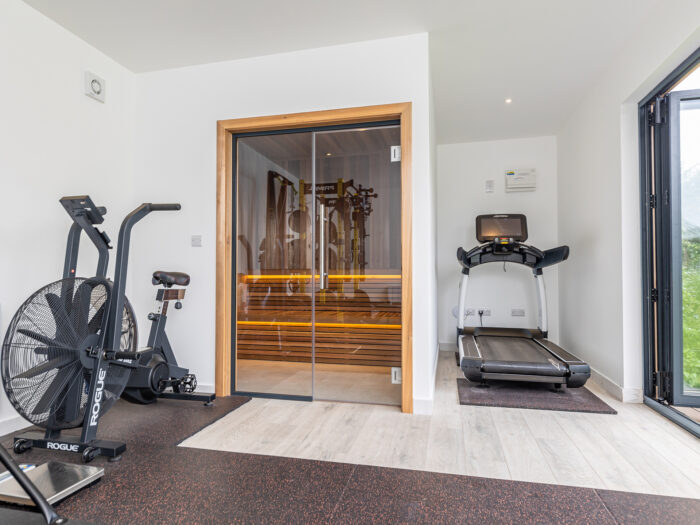
Image credit: Tiger
Home gym: storage
A good storage solution is vital for your gym gear, otherwise you’re entering trip-hazard territory – especially if you’re working out in a room that you also use for other things.
You can get great purpose-made storage racks for all your exercise kit – ideal if you’ve got a dedicated room.
If you’re exercising in your sitting room or bedroom, you can hide your mats and weights in a regular cupboard.
Cardio equipment
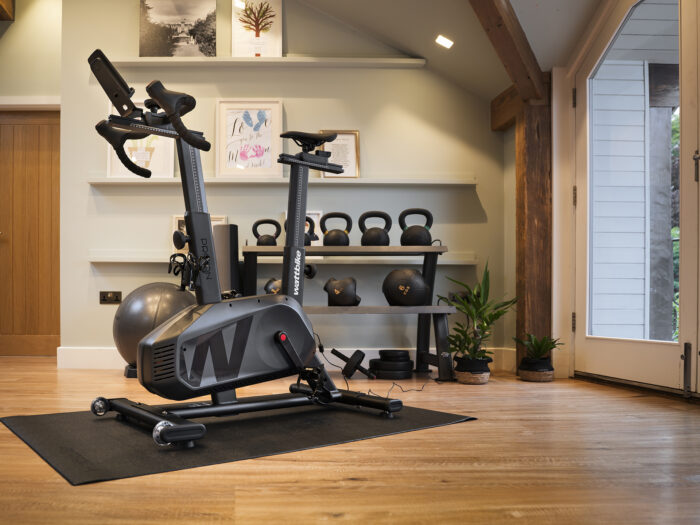
Image credit: Wattbike
The big-ticket investment pieces are the cardio machines, with options including: rowing machine, treadmills, skiing machines, vertical climbers.
Vertical machines can be good if you’re short on space.
Adam says, “Exercise bikes are a staple in a home gym, and they let you complete effective cardiovascular workouts that are gentle on your joints.
“Treadmills let you walk, jog and run in the comfort of your own home. And rowing machines can be compact, making them good for people who do not have a lot of space.”
It’s important to make sure you don’t end up with something that ends up bring a very expensive clothes rail.
Luke warns, “Initial overspending is a big mistake, especially if you’re new to exercise or not overly familiar with working out from home, as you might not stick to the routine you’ve planned – or you might find that working out from home is less mentally stimulating than working out in a gym.
“Remember, there’s no need to buy top-end equipment from a big-name brand when there are plenty of cheaper or functional-based alternatives you could get for a fraction of the cost.”
Ultimately, it’s important to buy something you actually enjoy using – otherwise, even if it’s just in the room next door, you just won’t use it.
Sarah-Jane explains, “For women, one piece of cardio equipment would be enough as it is vital for women over 30 to focus on strength training and building muscle as they start to lose muscle mass from the age of 30 onwards.
“The trend of doing lots of cardio exercise for women is outdated now and research has proved that increasing muscle mass is the key to longevity.”
Resistance gear
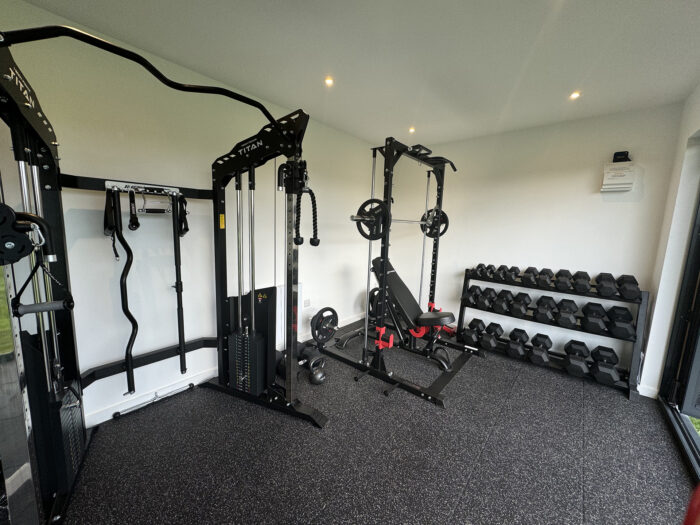
Image credit: Tiger
Luke advises, “When it comes to resistance apparatus, to get the best out of your space and minimise cost, choose apparatus where you can adjust the weight and/or function.
“For example, instead of buying a rack of different-sized dumbbells and barbells – which can take up huge amounts of space and drive up your costs – buy adjustable dumbbells and barbells, which you can simply add weight to and adapt for different exercises, intensities and rep ranges.
Home gym: foldaway kit
“If you want to get larger pieces of apparatus, such as fixed resistance machines, cardiovascular apparatus or resistance stations, try and buy compact or foldaway versions.
“This type of apparatus can potentially occupy huge amounts of space, and, in the case of cardiovascular equipment, can cost money to run so buying a foldaway ‘non-electric’ treadmill is a great way to save space and won’t increase your running(!) costs.”
Think second hand
We all know someone who’s bought all the gear then then never followed through on their fitness resolutions, so the second-hand market can be a good place to look for bargain equipment.
Luke says, “Most gym equipment depreciates vastly in value after it has been bought brand new, thus you can find some great bargains on Facebook Marketplace, Gumtree, Ebay, etc as well as on dedicated gym equipment market places.
“You can also source equipment direct from PT studios or private gyms that are closing down or up for sale – they will be potentially looking to offload their assets, so you can often negotiate or get a good discount.”
Garden-room gym
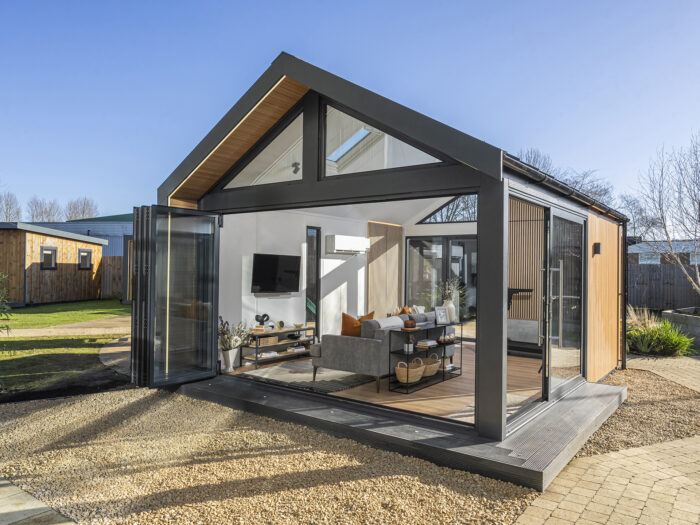
Image credit: Green Retreats
Another option to consider is a gym in the garden.
If you’ve already got a garden room, or you have the budget and space to install one, they can make wonderful gyms.
Charlie Conibear from Green Retreats says, “A garden-room gym offers a stylish, practical, and private solution for fitness enthusiasts looking to create a high-quality workout space at home.”
A garden room provides:
- Ample space – allowing you to work out comfortably while storing all the equipment you need
- Dedicated area – keeping your fitness routine separate from your living space
- Natural light and ventilation – creating an airy, motivating environment
- Custom design – you can choose reinforced flooring, mirrors, and integrated electrics for a professional set-up
- Year-round use – your room can be fully insulated for all-weather training.”

Image credit: Green Retreats
Sam Jenkinson, from Tiger adds, “A smaller garden building will work for workouts such as Pilates, but for multiple types of equipment you’ll need a larger garden room such as a log cabin or summer house.
“Insulation and ventilation for year-round comfort is important for regulating temperature, preventing condensation, and keeping your room fresh – especially important for high-intensity workouts.
“Throughout the summer months natural light will be perfect for your workouts, however, you’ll need artificial lighting for evening workouts and the darker months” – so you’ll need to think about getting electricity professionally run to your garden gym.
Do it for you
Ultimately, whatever kind of home gym you fancy, what matters is that you find a way to do exercise you enjoy in a way that works for you.
For some people this will mean going all out and creating a tailor-made personal gym at home that suits their exact workout needs.
For others, it could meaning building a gym in a shed where their teens can work out without disturbing anyone – or it could be as simple as keeping a rolled-up yoga mat under the bed and a couple of tealights ready for a calming morning yoga routine.
You know yourself what will work for you. The important thing is to value you yourself and your health, and find physical and mental space and time to exercise in a way you enjoy.
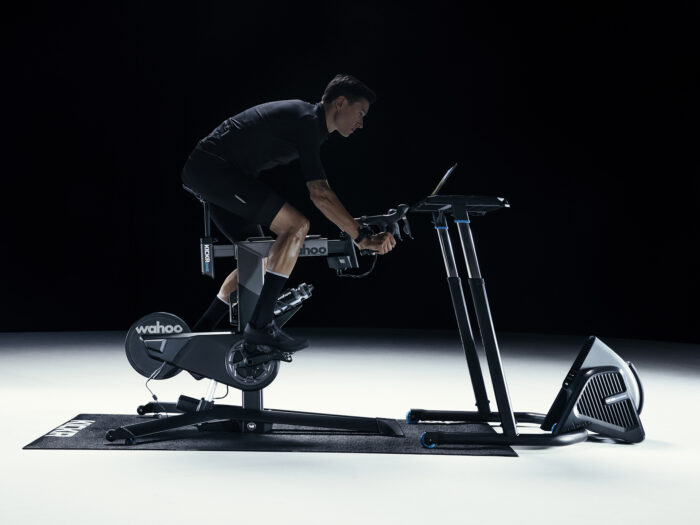
Image credit: Wahoo
READ MORE:


